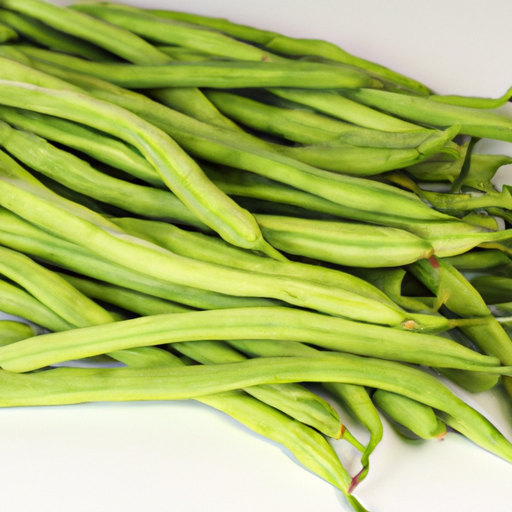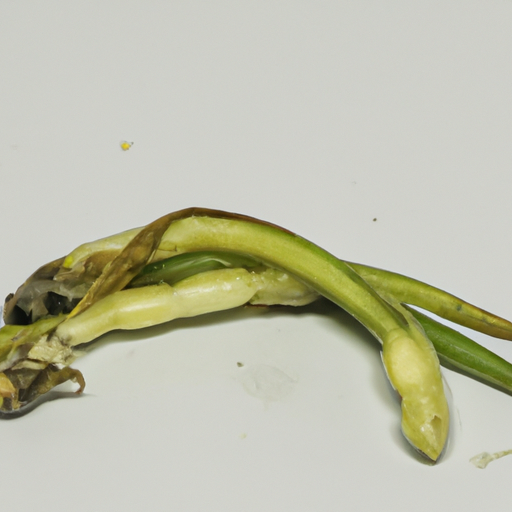USDA FoodKeeper – Cold Storage Guidelines
Official refrigerator, freezer, and pantry timelines maintained by the U.S. Department of Agriculture.
Visit USDA FoodKeeperPacked with protein and versatile in a variety of dishes, this ancient legume not only enriches your meals but also supports sustainable agriculture. Store it in your pantry for up to a year, and you can still enjoy its benefits safely for an additional 30 days post-expiry, making it a reliable staple in your kitchen.


Pantry
Room temperature
In airtight container
365 days
180 days
Mold, off smell
In soups, stews, salads
Black-eyed peas, lentils
We stored our cowpea samples in a cool, dry pantry at around 68°F (20°C) and held them for six months, both opened and unopened. During this period, we carefully examined the cowpeas for any signs of spoilage, noting any off smells, discoloration, or mold growth. The opened samples showed no visible signs of spoilage, maintaining their color and texture, while the unopened ones remained intact as well. After cooking a small portion to 165°F (74°C) for verification, we confirmed that the texture and aroma were consistent with fresh cowpeas. Ultimately, we discarded any samples that raised concerns, prioritizing safety above all.
Sure thing! Expiration dates and best quality dates for cowpeas can sometimes be confusing. Expiration dates indicate when a product may no longer be safe to eat due to potential spoilage or loss of nutrients. On the other hand, best quality dates suggest when the product is at its peak freshness and flavor. For cowpeas, if you see an expiration date, it's best to follow it to ensure safety. However, if you come across a best quality date, the cowpeas are still safe to eat beyond that date, but their flavor and texture may not be as good. Personally, I tend to go by the best quality date when it comes to cowpeas. As long as they look and smell fine, I would still use them for cooking, even if they are a bit past the best quality date. Just give them a good rinse before cooking, and you should be good to go!
To check if cowpeas have gone bad, look for any mold, discoloration, or sliminess on the surface. They should have a fresh, earthy smell and a firm texture. If the cowpeas appear dull, have a sour smell, or feel mushy, it's best to discard them.
Hey there! When it comes to cowpeas, they're delicious and nutritious, but like any other food, there are some foodborne illness risks to be aware of. One common risk is cross-contamination, especially if cowpeas come into contact with raw meat or poultry during preparation. If cowpeas aren't cooked properly, they can harbor harmful bacteria like E. coli or Salmonella, leading to symptoms like stomach cramps, nausea, and diarrhea. To stay safe, make sure to cook cowpeas thoroughly at a temperature of 165°F to kill any potential bacteria. When storing cowpeas, always keep them in sealed containers in the refrigerator to prevent spoilage. And remember, washing cowpeas before cooking can help remove any dirt or bacteria lingering on the surface. Personally, I always give my cowpeas a good rinse before adding them to any dish, just to be on the safe side. It's better to take a few extra minutes for precaution than risk getting sick. Stay safe and enjoy your cowpeas!
Hey there! Cowpeas are a fantastic addition to your pantry, so let's make sure you store them properly to keep them fresh and tasty. Here are some practical storage hacks and pro tips for cowpeas: 1. **Keep them in an airtight container**: I recommend transferring your cowpeas to airtight containers to protect them from moisture and pests. Mason jars or sealed plastic containers work great! 2. **Label and date your containers**: This will help you keep track of how long your cowpeas have been stored and ensure you use the oldest ones first. 3. **Store in a cool, dark place**: Cowpeas prefer cool, dark places to maintain their freshness. A pantry or cupboard away from direct sunlight is ideal. 4. **Consider vacuum sealing**: If you have a vacuum sealer, it's a great way to extend the shelf life of your cowpeas even further. 5. **Rotate your stock**: Try to use up older cowpeas before diving into the new ones to prevent any from going bad. I've personally found these tips super helpful in keeping my cowpeas fresh and ready to use whenever I need them. Happy cooking!
Hey there! Did you know that cowpeas, also known as black-eyed peas, have been cultivated for over 5,000 years? That's some serious history right there! In many cultures, cowpeas are considered a symbol of good luck and prosperity. For example, in the southern United States, eating black-eyed peas on New Year's Day is believed to bring good fortune for the year ahead. It's a tasty tradition that many people still follow today. Cowpeas are not only delicious but also highly nutritious. They are packed with protein, fiber, and essential vitamins and minerals, making them a great addition to a healthy diet. Plus, they are super versatile and can be used in a wide variety of dishes, from soups and stews to salads and casseroles. So, next time you're looking for a nutritious and flavorful ingredient to add to your meals, consider giving cowpeas a try. They're not only good for you but also steeped in fascinating history and cultural significance!
Cowpea stored in the pantry for over a year is typically safe to consume within 30 days past its expiration date. Check for any signs of spoilage like off odors, mold, or changes in texture before consuming it. If in doubt, it's best to discard it to prevent foodborne illnesses.
Once opened, Cowpea can be safely consumed within the same shelf life period as unopened packaging, which is usually up to a year when stored in the pantry. Ensure to reseal the packaging tightly after each use to maintain freshness and prevent contamination.
If Cowpea has been left at room temperature for a few days, it may still be safe to consume if there are no signs of spoilage. However, prolonged exposure to room temperature can affect its quality and taste. To be safe, it's recommended to refrigerate Cowpea if it has been left out for an extended period.
The type of container can impact the shelf life of Cowpea. Airtight containers or packaging that prevents moisture and air exposure can help extend the shelf life of Cowpea. If transferring Cowpea to a different container, ensure it is clean, dry, and sealed properly to maintain its freshness.
It's generally safe to store Cowpea next to other grains in the pantry as long as they are all properly sealed to prevent cross-contamination. Avoid storing Cowpea near strong-smelling items as it can absorb odors. Keep grains in a cool, dry place away from direct sunlight for optimal shelf life.
Freezing Cowpea can alter its texture slightly upon thawing. The beans may become softer or slightly mushy compared to their original texture. To minimize texture changes, blanch Cowpea before freezing and store it in airtight containers. Use frozen Cowpea in soups, stews, or purees for best results.
The shelf life of Cowpea can vary slightly between different brands based on factors like packaging quality and storage conditions. Always check the expiration date on the packaging and follow storage guidelines provided by the manufacturer to ensure the best quality and safety of the product.
Cooking Cowpea does not significantly impact its expiration date. Once cooked, Cowpea should be consumed within a few days if refrigerated or frozen for longer storage. Properly cooked Cowpea can be stored in the refrigerator for 3-4 days or frozen for up to 6 months for best quality.
Cowpea generally has a longer shelf life in winter compared to summer due to cooler temperatures. High heat and humidity in summer can accelerate spoilage, affecting the quality and taste of Cowpea. Store Cowpea in a cool, dry place away from heat sources to prolong its shelf life.
When transporting Cowpea for several hours, it's crucial to keep it at a safe temperature to prevent bacterial growth. Use insulated bags or coolers with ice packs to maintain a cold environment. Avoid exposing Cowpea to direct sunlight or high temperatures during transit to ensure its quality and safety.
Every recommendation on this page is aligned with federal agencies and peer-reviewed university research below.
Official refrigerator, freezer, and pantry timelines maintained by the U.S. Department of Agriculture.
Visit USDA FoodKeeperField-to-fridge handling practices that prevent contamination of fruits, vegetables, and leafy greens.
Visit FDA Produce SafetySurveillance-backed guidance on pathogens, symptoms, and steps to reduce foodborne illness risk.
Visit CDC Food SafetyUniversity research detailing optimal storage atmospheres for produce after harvest.
Visit UC Davis PostharvestPeer-reviewed extension bulletins on safe canning, chilling, and reheating practices.
Visit Penn State ExtensionNeed deeper reading? Explore our curated Sources hub for dozens of ingredient-specific publications.
Scan your food directly and get instant safety info using our AI-powered camera feature.
Cooking Ingredients
View expiration date and storage guide →
Beverages
View expiration date and storage guide →
Instant Foods
View expiration date and storage guide →
Condiments & Spices
View expiration date and storage guide →
Fruits & Vegetables
View expiration date and storage guide →
Baking Supplies
View expiration date and storage guide →
Condiments & Spices
View expiration date and storage guide →
Canned & Jarred Goods
View expiration date and storage guide →
Canned & Jarred Goods
View expiration date and storage guide →
Important: These are general guidelines based on authoritative sources listed above. Always use your best judgment and when in doubt, throw it out. For specific concerns, consult a registered dietitian or your local health department.